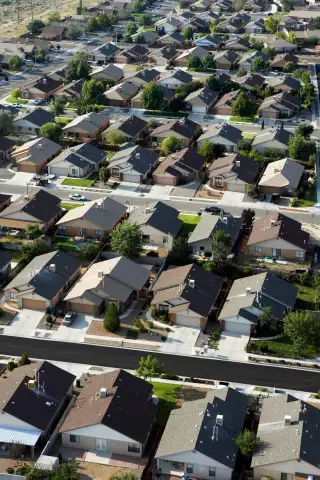For the Fed, There's Only One Excuse Left to Keep Rates Low

The pressure is mounting on the Federal Reserve to start raising interest rates — and Fed chair Janet Yellen is running out of excuses.
On Wednesday, the Fed announced that it would keep short-term interest rates near zero and would continue to gradually taper its stimulative bond-buying program as the economy improves. No surprise there.
But the chatter for the Fed to stop coddling the economy really heated up Wednesday morning.
That was when a new government report showed that, after hitting a speed bump in the snowy first quarter, the economy really sped up between April and June. Gross domestic product grew at an annual rate of 4.0% in the second quarter.
What's more, the government went back and revised some of its estimates for prior quarters. Uncle Sam now believes the economy grew well above the normal 3% rate in three out of the past four quarters.
"With this morning’s GDP release," says James Paulsen, chief investment strategist and economist at Wells Capital Management, the "is-the-Fed-behind-the-curve fears among investors are increasingly evident."
The GDP report included preliminary measures of inflation that might not sit well with Wall Street's inflation hawks.
In the second quarter, the so-called personal consumption expenditure index, which is the Fed's preferred measure of inflation, grew 2.3%. If you strip out volatile food and energy costs, core PCE still rose 2%. UBS economist Maury Harris notes that this represents a big jump from the 1.2% pace of core inflation in the first quarter. Plus, 2% is the target that the Fed has openly set for inflation.
While the actual level of inflation today may not be so worrisome, the ability to fight inflation after the fact is, says Guy LeBas, chief fixed-income strategist at Janney Montgomery Scott. "The challenge with inflation is that there’s a very long lag between policy and price pressures, so a Fed concerned with inflation 12 to 24 months down the road needs to start acting now to protect against the prospect."
Three years ago, the Fed drew another line in the sand. The Fed back then said that it would not think about raising rates until the national unemployment rate fell to 6.5%. Back then, policy makers thought that this would not transpire until around 2015. However, the unemployment rate fell below this level in April and is threatening to fall below 6%.
US Unemployment Rate data by YCharts
In recent months, as the Fed has tried to explain why it won't hike rates soon despite rising inflation and falling unemployment, Yellen introduced a new reason altogether: housing.
In mid July, in a monetary policy report delivered to Congress, Yellen said:
The housing sector has shown little recent progress. While it has recovered notably from its earlier trough, activity in the sector leveled off in the wake of last year’s increase in mortgage rates, and readings this year have, overall, continued to be disappointing.
Later on in the report, Yellen noted that the lack of traction in the housing sector is probably preventing the labor market from reaching its full potential:
Even after rising noticeably in 2012 and the first half of 2013, real residential investment remains 45 percent below its pre-recession peak. The lack of a rapid housing recovery has also affected the labor market: Employment in the construction sector is still more than 1.6 million lower than the average level in 2006.
In announcing its rate decision on Wednesday, the Fed's Federal Open Market Committee reiterated that while economic growth in general appears to be returning, "the recovery in the housing sector remains slow."
The irony is that the two things that are likely to get the housing market on track are low mortgage rates and an improving job market.
To achieve the latter, the Fed is keeping rates low. Yet to achieve the former, the Fed needs to show the bond market that it is serious about combatting inflation. And the worst way to do that is keep rates low.
There, in a nutshell, is Janet Yellen's conundrum.